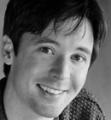 Fundamental Physics Measurements with LEGO
Fundamental Physics Measurements with LEGOIn the late 1800's, a small, well-formed cylinder composed of platinum and a little iridium (the...
 At home physics demonstrates the Coriolis effect on both sides of the globe
At home physics demonstrates the Coriolis effect on both sides of the globeA note to the reader: This article requires following special instructions to watch...
 Scientific Research through Creativity in "The Cloud"
Scientific Research through Creativity in "The Cloud"Recently, I enjoyed the opportunity to solve and implement a simple web interface problem...
 DARPA on the Brain
DARPA on the BrainWe've highlighted in the past some interesting activity from DARPA (read more via...










